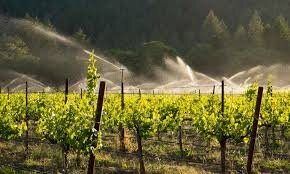THE BOTTOM LINE: Crop Suitability
/
This morning I was interviewed by a journalist for The Times’ Raconteur supplement. They’re doing a mid-December piece on the current state of the wine industry and she was specifically targeting sustainability and climate change. Every time I talk about this – and I talk about it to anyone who will listen – I try to find new ways to abbreviate and organise my thoughts. Honing concise and pithy sound bites is not something at which I excel. But this morning, I got a bit closer. It became blindingly obvious to me that the crux of the issue is Crop Suitability.
I attended a tasting of New Mexican, Arizonan and Texan wines in a little French bistro in Manhattan last week. The producers all told me that they had to irrigate in order to survive that climate. Shame, because otherwise, they were doing everything else right. The majority were organic or biodynamic. But before there can be organic, natural, zero-carbon, green or biodynamic wines with any authenticity, there has to be “dry farmed” wines, first. This has to be the starting point, or all other sustainable efforts become pointless. “Sustainable freshwater irrigation” is an oxymoron in the context of wine, a luxury crop. True viticultural sustainability can only be achieved through dry farming, as has been practiced in Europe’s finest vineyards for centuries. If we have taken the vitis vinifera away from its native soils only to then contrive and manipulate foreign environments in order to grow it, then we have to ask ourselves if this is legitimate pursuit in the context of today’s climate-change driven water wars. If a producer cannot transition to dry farming (wrong soil/insufficient winter rainfall), then they have to look at crop diversification or migrate – that what other luxury crops such as chocolate, coffee and tea are already doing. As Randall Grahm of Bonny Doon says: “If we can’t farm a particular crop in a truly sustainable way we have no business farming that crop”.
